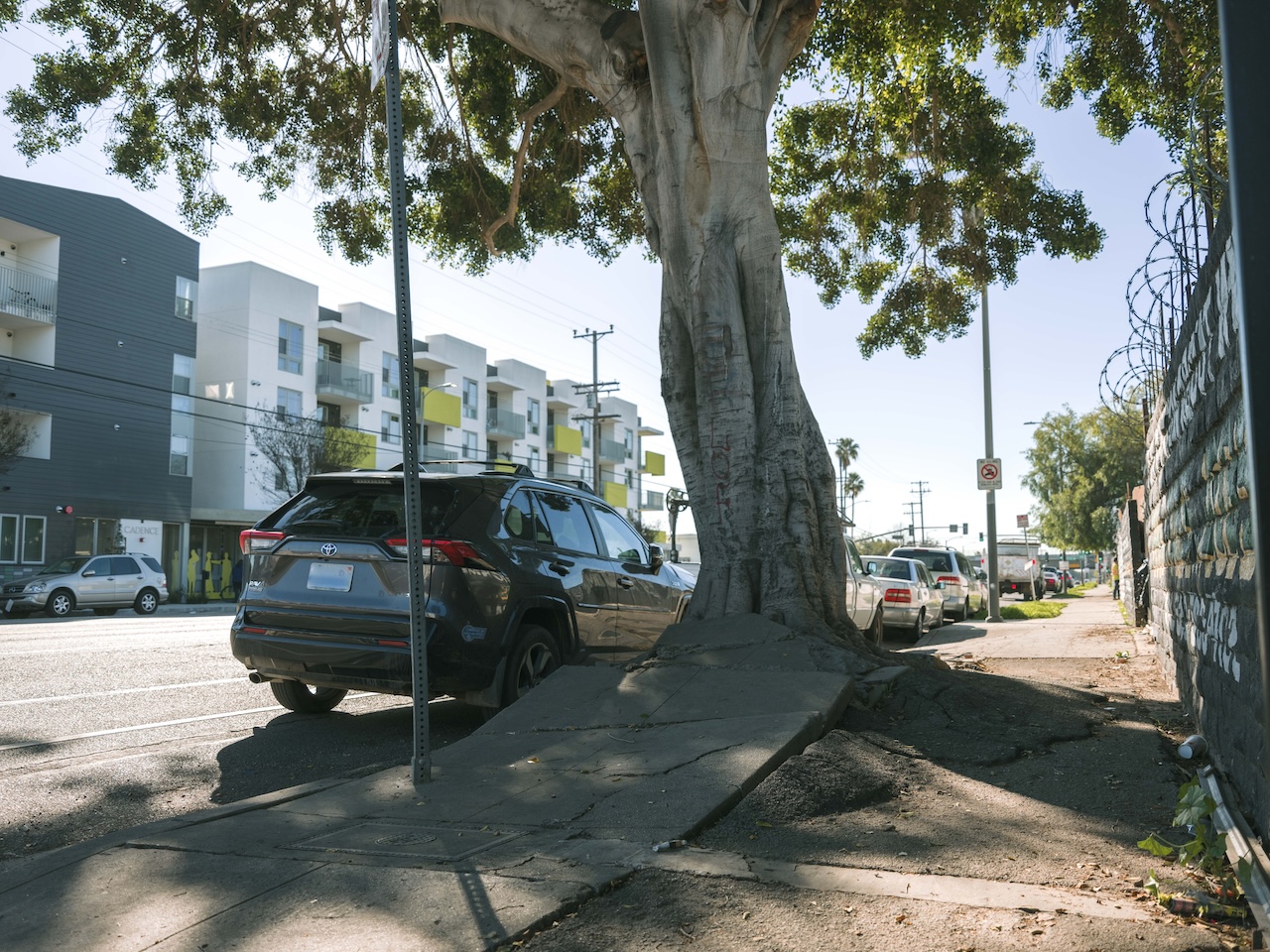If you read the Los Angeles Times’ June 7 editorial, “Is LA Getting Serious About Safer Streets?” you probably left with more questions than answers. That’s because LA’s public works and transportation policy is a lot like the roots in the editorial’s lead photo: tangled, hard to navigate, and easy to trip over—even for the most dedicated advocates.
Here’s how we see it—and how you can plug in.
The editorial highlights two efforts currently in motion:
- A grassroots-led 2024 ballot measure to enforce the City’s long-ignored Mobility Plan 2035
- A City Council motion was introduced in response, which may offer a path to faster change
Both are promising. Together, they spotlight our urgent need for:
- Safer streets
- A system that makes progress unavoidable (e.g., if a street is being repaved, safety upgrades are automatically included)
- A coordinated plan to maintain and improve all aspects of LA’s public right-of-way
At Investing in Place, we’re particularly focused on that last point: the need for a citywide Capital Infrastructure Plan. Without a plan, we’ll never achieve consistent, equitable progress. The ballot measure and motion make incremental strides, but there are key differences and more deeper implications we’ll unpack below.
How You Can Get Involved
- Join the Joint Committee Hearing on Wednesday, June 22, at 2 PM
- Submit public comment to Council File 15-0719-S26
- Reach out to us to learn more and find ways to engage
Some Background: The Ballot Measure
Over the past year, Streets for All and partners have gathered signatures to place a measure on the November 2024 ballot. The measure would require the City to implement elements of its 2035 Mobility Plan, such as the Bicycle Enhanced Network, Pedestrian Districts, and Transit Priority Corridors, whenever major street improvements are made.
These networks are currently aspirational: they set priorities but don’t include design details, outreach, or implementation plans. The coalition expects to submit its signatures for certification in the coming weeks.
The City Council Motion
In anticipation, the Council President and four other councilmembers introduced a motion (CF 15-0719-S26) that builds on the goals of the ballot measure. It would direct the City to adopt an ordinance that:
- Coordinate street projects across multiple departments
- Prioritizes equity in implementation
- Expands the scope beyond what’s in the Mobility Plan (e.g., adding crosswalks, bus shelters, stormwater fixes, and sidewalk repair)
The motion acknowledges what many already know: the public right-of-way isn’t just about traffic, it’s about safety, equity, climate resilience, and dignity.
What’s Next This Summer
- June 22: Joint committee hearing (Public Works and Transportation)
- July: Motion may be heard in the Rules, Elections, and Intergovernmental Relations Committee
- If approved by Council: The City Attorney will begin drafting the ordinance, which could return for Council consideration as early as August
At the same time, the ballot initiative, once certified, will trigger a decision point for the Council. They must choose to:
- Adopt it as written
- Put it on a special election ballot
- Place it on the November 2024 general election ballot
If Council adopts its own ordinance, the ballot measure’s proponents could choose to withdraw it depending on how the ordinance aligns with their goals.
Why the Motion Matters
This new motion reflects a broader, bolder approach than the Mobility Plan alone. It acknowledges that safer streets require more than lines on a map. It calls for:
- Cross-department coordination
- Clear prioritization frameworks
- A work plan tied to equity and long-term funding
And critically, it puts the idea of a Capital Infrastructure Plan (CIP) back on the table.
LA Needs a Capital Infrastructure Plan
Currently, the City receives nearly $1 billion annually in infrastructure-related funds (excluding state, federal, and Metro dollars). And yet, there is no long-range plan guiding how those funds are spent.
This motion builds on previous calls (see Council Files 21-0039 and 19-1373) for a citywide infrastructure plan that coordinates departments and bakes equity into every step.
What We’re Watching For: 5 Key Questions
-
What is LA’s unified vision for public works and transportation?
-
Why isn’t cross-department coordination working, and what would fix it?
In 2022, key departments signed an MOU to improve coordination. It’s time to ask: what’s changed?
- How does each department approach capital planning?
How far ahead do they plan? Do they maintain project wish lists? How do they prioritize and engage the public? - How can communities be included meaningfully, without giving undue weight to louder or only people with access to power?
- How does this build on the CAO’s equity-focused funding work?
The CAO’s January 2022 report proposed a 5-year capital plan. This motion could help carry that forward.
This is one of the most critical conversations in Los Angeles: how we allocate public dollars for public infrastructure. At Investing in Place, we’ll be tracking every step, collaborating with community partners, City leaders, and agency staff to push for clarity, accountability, and better outcomes.








